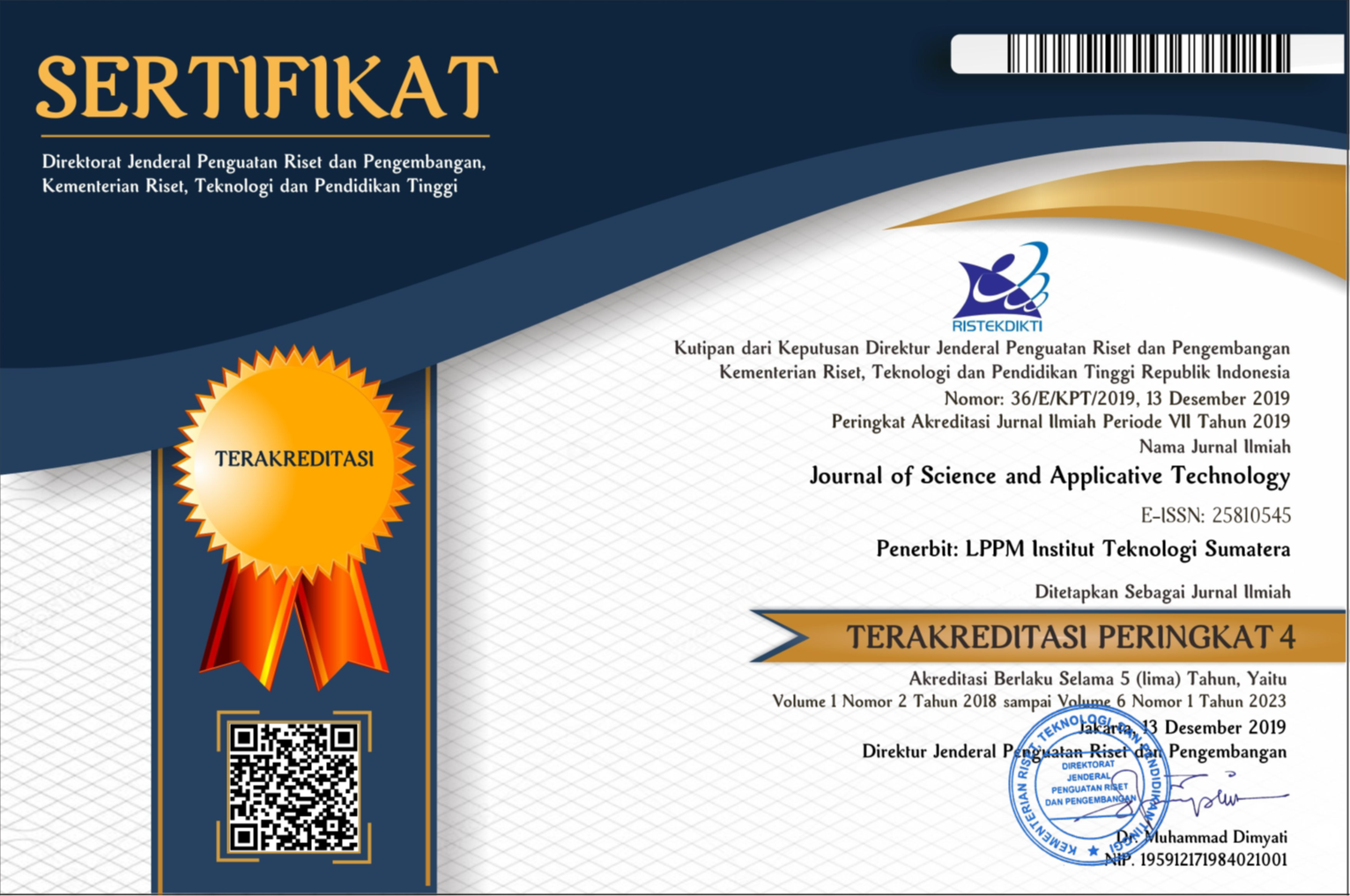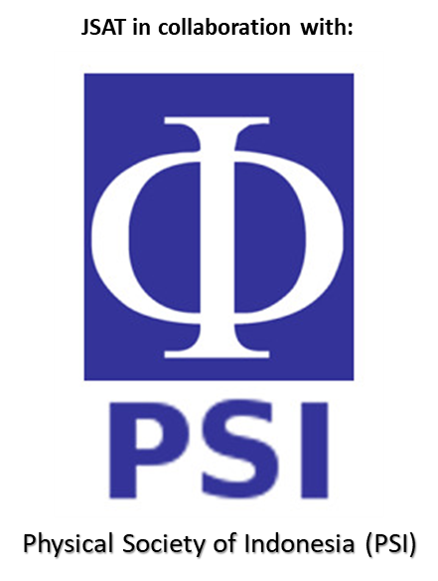Studi Batuan Asal (Provenance) Batupasir Formasi Simpangaur Daerah Way Krui, Lampung
Abstract
Bengkulu basin is the one of fore arc basin which formed in Sumatra island. The basin formation is inseparable from tectonic activity of the Sumatra Island from the Pre-Tertiary era to present day. The relationship between tectonic activities and the basin filling can be identified by conducting a provenance study on the sedimentary rocks. The Simpangaur Formation is a Tertiary sedimentary rock that has filled the Bengkulu Basin in the southern Sumatra. The aim of this research is determining the provenance of Simpangaur Formation existed in Way Krui area, Lampung, and its tectonic environment. The observations of thin section were carried out on eleven sedimentary rock samples obtained from field. The provenance of these rocks is analyzed by quantifying the mineral composition microscopically. The result analysis show that the grains originated from a magmatic arc environment, specifically the transitional arc and undissected arc. Based on the presence of polycrystalline quartz in eleven rock samples, it is interpreted as originating from the Orogen Arc. In addition, it is also interpreted that the provenance for sandstone samples of the Simpangaur Formation are plutonic and metamorphic rocks in a semi-arid climate, based on ancient climate.
Downloads
References
[2] A. Pulunggono, S. A. Haryo, dan G. K. Christine. “Pre-Tertiary and Tertiary Fault Systems As A Framework of the South Sumatra Basin; a study of SAR-Maps,” The 21th Proceeding Indonesian Petroleum Association, 1992, pp.338-360.
[3] K. R. Newcomb and W. R. McCann. “Seismic History and Seismotectonics of The Sunda Arc,” Journal of Geopysical Research, vol. 92, pp. 421-439, 1987.
[4] S. Susilohadi, C. Gaedicke and A. Ehrhardt. “Neogene Structures and Sedimentation History Along The Sunda Forearc Basins Off Southwest Sumatra And Southwest Java,” Marine Geology, vol. 219, pp. 133-154, 2005.
[5] D. M. Hall, B. A. Buff, M. C. Courbe, B. W. Seurbert, M. Siahaan and A. D. Wirabudi. “The Southern Fore-Arc Zone of Sumatera: Cainozoinc Basin-Forming Tectonism And Hidrocarbon Potensial,” The 22nd Proceeding Indonesian Petroleum Association, 1993, pp. 319-344.
[6] T. C. Amin, Sidarto, S.Santoso, dan W.Gunawan. “Laporan Pemetaan Geologi Lembar Kotaagung, Sumatera,” Pusat Penelitian dan Pengembangan Geologi, Bandung, 1993.
[7] A. J. Barber dan M. J. Crow. “Chapter 4: Pre-Tertiary Stratigraphy in Barber, A.J., Crow, M.J. dan Milson, J.S. (Eds), Sumatera: Geology, Resource and Tectonic Evolution,” Geological Society London Memoir, no. 31, pp. 24-53, 2005.
[8] A. Izart A., B. M. Kemal and J. A. Malod. “Seismic Stratigraphy and Subsidence Evolution of Northwest Sumatra Fore-arc Basin,” Marine Geology, vol. 122, pp. 109-124, 1994.
[9] Kusnama, S. A. Mangga, and D. Sukarna. “Tertiary Stratigraphy and Tectonic Evolution of Southern Sumatra,” Geological Society of Malaysia-Circum-Pacific for Energy and Mineral Resources Tectonic Framework and Energy Resource of The Western Margin of Pacific Basin, Kuala Lumpur, pp. 143-152, 1992.
[10] B. Yulihanto, B. Situmorang, A. Nurdjajadi, and B. Sain. “Structural Analysis of The Onshore Bengkulu Forearc Basin And its Implication for Future Hydrocarbon Exploration Activity,” The 24th Proceeding Indonesia Petroleum Association, 1995, pp. 85-95.
[11] J. A. Malod, K. Karta, M. O. Beslier, and M. T. Zen. “From Normal to Oblique Subduction: Tectonic Relationship Between Java and Sumatra,” J. Southeast Asian Earth Sci., vol. 12(1-2), pp. 85-93, 1995.
[12] R. Heryanto. “Karaktertistik Formasi Seblat di Daerah Bengkulu Selatan,” Jurnal Geologi Sumberdaya Mineral, vol. 16, no. 3, pp.179-195, 2006.
[13] S. Gafoer, T. C. Amin, dan R. Pardede. “Peta Geologi Regional Lembar Bengkulu, Sumatera Skala 1:250.000,” Pusat Penelitian dan Pengembangan Geologi, Bandung. 1992.
[14] F. J. Pettijohn, “Sedimentary Rocks 3rd ed,” New York: Harper & Row Publishing Co, 1975.
[15] W. R. Dickinson, and C. Suczek, “Plate Tectonics and Sandstone Composition,” American Association of Petroleum Geologists Bulletin, vol. 63, no. 12, pp. 2164-2182, 1979.
[16] A. Basu. “Influence of Climate and Relief on Compositions of Sandstone Released at Source Areas, In: Zuffa, G.G. (ed.), 1990. Provenance of Arenites, NATO ASI Series, Series C,” Mathematical and Physical Sciences, vol. 148, pp. 1-18, 1985.
[17] L. J. Suttner, A. Basu, and G. H. Mack. “Climate and The Origin of Quartz Arenites,” Journal of Sedimentary Petrology, vol. 51, pp. 1235–1246, 1981.
[18] H. Darman dan F. H. Sidi. “An Outline of The Geology of Indonesia,” Publikasi Ikatan Ahli Geologi Indonesia. Bandung: LENUSA Publishing, 2000.
[19] P. Krynine, “Microscopic Morphology of Quartz Types,” Annual 2nd Congress Panamas Ing Minas Geology, vol. 3, pp. 35-49, 1940.
[20] M. Bernet and K. N. Bassett. “Single Quartz Grain SEM-CL/Optical Microscopy Provenance Analysis,” Journal of Sedimentary Research, vol 75, no. 3, pp. 492–500, 2005.
Copyright (c) 2023 Journal of Science and Applicative Technology

This work is licensed under a Creative Commons Attribution-NonCommercial 4.0 International License.
All the content on Journal of Science and Applicative Technology (JSAT) may be used under the terms of the Creative Commons Attribution-NonCommercial 4.0 International License.
You are free to:
- Share - copy and redistribute the material in any medium or format
- Adapt - remix, transform, and build upon the material
Under the following terms:
- Attribution - You must give appropriate credit, provide a link to the license, and indicate if changes were made. You may do so in any reasonable manner, but not in any way that suggests the licensor endorses you or your use.
- NonCommercial - You may not use the material for commercial purposes.
- No additional restrictions - You may not apply legal terms or technological measures that legally restrict others from doing anything the license permits.





















